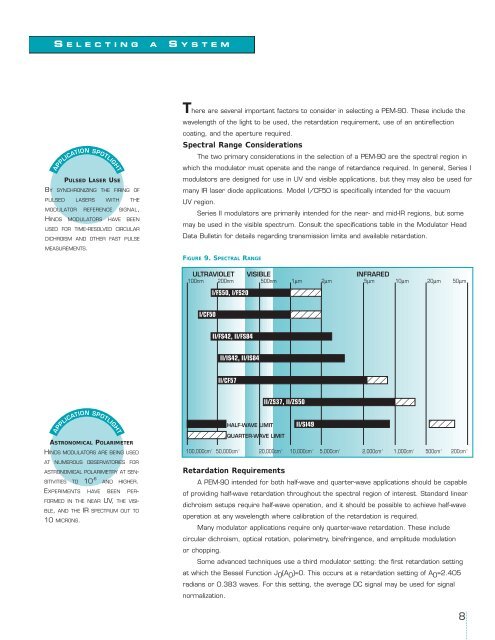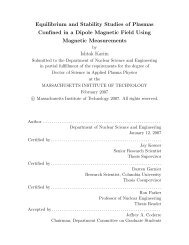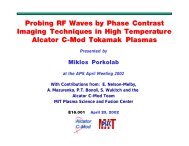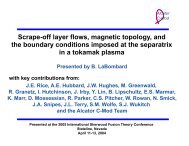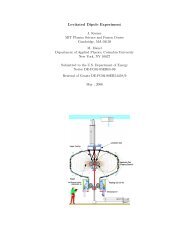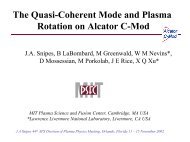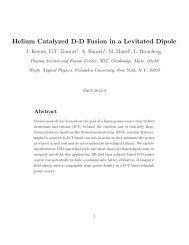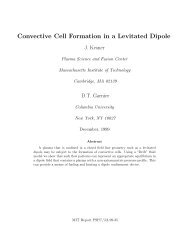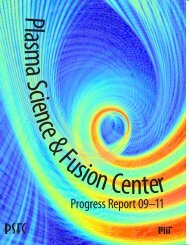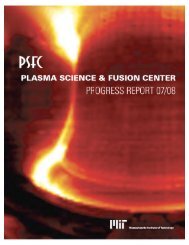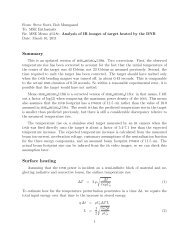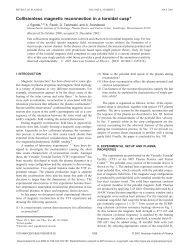Hinds PEM-90 v5
Hinds PEM-90 v5
Hinds PEM-90 v5
Create successful ePaper yourself
Turn your PDF publications into a flip-book with our unique Google optimized e-Paper software.
PULSED LASER USE<br />
BY SYNCHRONIZING THE FIRING OF<br />
PULSED LASERS WITH THE<br />
MODULATOR REFERENCE SIGNAL,<br />
HINDS MODULATORS HAVE BEEN<br />
USED FOR TIME-RESOLVED CIRCULAR<br />
DICHROISM AND OTHER FAST PULSE<br />
MEASUREMENTS.<br />
There are several important factors to consider in selecting a <strong>PEM</strong>-<strong>90</strong>. These include the<br />
wavelength of the light to be used, the retardation requirement, use of an antireflection<br />
coating, and the aperture required.<br />
Spectral Range Considerations<br />
The two primary considerations in the selection of a <strong>PEM</strong>-<strong>90</strong> are the spectral region in<br />
which the modulator must operate and the range of retardance required. In general, Series I<br />
modulators are designed for use in UV and visible applications, but they may also be used for<br />
many IR laser diode applications. Model I/CF50 is specifically intended for the vacuum<br />
UV region.<br />
Series II modulators are primarily intended for the near- and mid-IR regions, but some<br />
may be used in the visible spectrum. Consult the specifications table in the Modulator Head<br />
Data Bulletin for details regarding transmission limits and available retardation.<br />
FIGURE 9. SPECTRAL RANGE<br />
ASTRONOMICAL POLARIMETER<br />
HINDS MODULATORS ARE BEING USED<br />
AT NUMEROUS OBSERVATORIES FOR<br />
ASTRONOMICAL POLARIMETRY AT SEN-<br />
SITIVITIES TO 10 -6 AND HIGHER.<br />
EXPERIMENTS HAVE BEEN PER-<br />
FORMED IN THE NEAR UV, THE VISI-<br />
BLE, AND THE IR SPECTRUM OUT TO<br />
10 MICRONS.<br />
Retardation Requirements<br />
A <strong>PEM</strong>-<strong>90</strong> intended for both half-wave and quarter-wave applications should be capable<br />
of providing half-wave retardation throughout the spectral region of interest. Standard linear<br />
dichroism setups require half-wave operation, and it should be possible to achieve half-wave<br />
operation at any wavelength where calibration of the retardation is required.<br />
Many modulator applications require only quarter-wave retardation. These include<br />
circular dichroism, optical rotation, polarimetry, birefringence, and amplitude modulation<br />
or chopping.<br />
Some advanced techniques use a third modulator setting: the first retardation setting<br />
at which the Bessel Function J O (A O )=O. This occurs at a retardation setting of A O =2.405<br />
radians or 0.383 waves. For this setting, the average DC signal may be used for signal<br />
normalization.<br />
8


